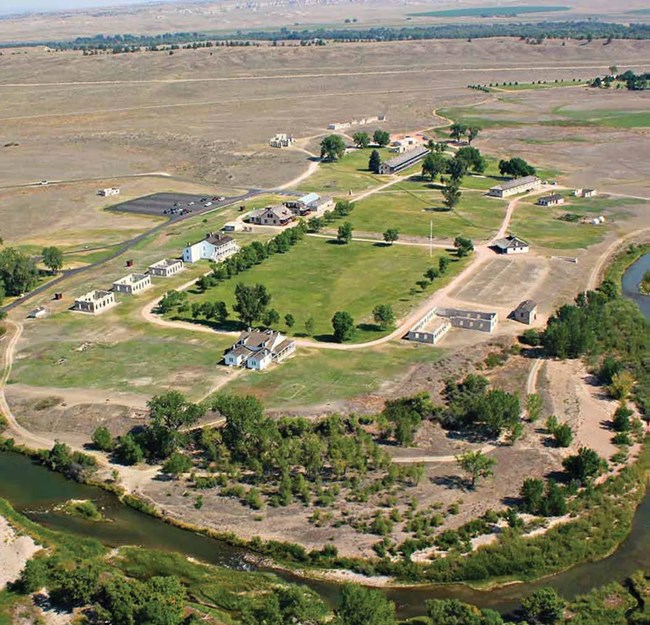Learn about NRCAs
The Natural Resource Condition Assessment (NRCA) Program provides framework, funding, and publishing support to parks to aid in the synthesis and documentation of natural resource conditions. Condition assessment reports are a tool to describe selected park resources, and record a snapshot of their current condition, identify trends, and identify potential or current threats and stressors. Understanding the condition and trend of natural resources is key for parks and NPS planners to appropriately prioritize and allocate stewardship resources.

Photo by John Gilpin
Fort Laramie National Historic Site lies nestled in the grasslands of southeastern Wyoming, at the confluence of the Laramie and North Platte Rivers.
Traditional NRCA Report: 2018
In an effort to better understand and manage the natural resources of the site, a Natural Resource Condition Assessment was completed, and published in 2018. Staff from the National Park Service (NPS) and the University of Wyoming worked together to identify the natural resources and stressors to include in this condition assessment. The final report includes ten resource topics:
- Viewshed |
||
- Night sky |
||
- Soundscape |
||
- Air quality |
||
- Water quality |
||
- Geology |
||
- Vegetation |
||
- Birds |
||
- Bats |
||
- Pollinators |
Current condition was not able to be determined for one of the 10 natural resource topics (birds) due to absence of specific management goals. For the remaining topics, the overall condition varied. Three topics were determined to be in good condition: viewshed, surface water quality, and geology. Five topics were of moderate concern: night sky, air quality, vegetation, bats, and pollinators. The remaining topic was of significant concern: soundscape. Increased development of industrial infrastructure around the site has contributed to the poor condition of soundscape and the deteriorating night sky quality.
For other reports and natural resource datasets visit the NPS Data Store.
Source: NPS DataStore Collection 7765 (results presented are a subset). To search for additional information, visit the NPS DataStore.
Last updated: August 16, 2022
